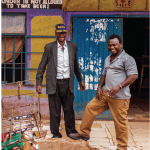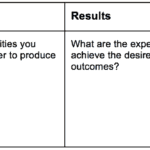The Key Ingredients of COVID-19 Adaptation: How Non-Profits Leveraged Flexible Funding to Navigate the Pandemic
In October 2020, Instiglio, an anonymous donor and the Global Development Incubator launched the COVID-19 Adaptation Fund to enable non-profit organizations in Kenya and Rwanda to adapt their programming to the pandemic and continue delivering services to vulnerable populations. The Fund made awards to organizations that proposed innovative adaptations to overcome the challenges brought by the pandemic to service delivery. These innovations were implemented across a range of sectors (e.g., agriculture, social protection, enterprise development), populations (e.g., women, youth, refugees) and geographies.
Nine organizations were jointly awarded $800,000, and they recently reflected with Instiglio on their experience utilizing these funds. These conversations revealed the importance of receiving this flexible funding at the right time, when the organizations needed to make essential investments. The organizations also highlighted the value of having flexibility to use the funding to adapt to pandemic-related changes in the environment. Below, we’ll share other insights these grantees shared about how they’ve used this funding to navigate COVID-19’s unprecedented challenges – insights we hope will be useful to other impact-focused organizations as they work to maintain service delivery, both during the current pandemic and in response to future crises.
The Results of the COVID-19 Adaptation Fund
The ways in which the grantees used the funding to overcome COVID-19-related challenges fall into two categories: leveraging the power of digital tools and adapting social protection services to the new challenges.
Many of the organizations leveraged digital tools – such as Short Message Service (SMS), Unstructured Supplementary Service Data (USSD), Interactive Voice Response (IVR) and apps – to maintain and improve their service delivery. Precision Development, for example, adapted MoA-INFO, the SMS platform it built with the Kenyan Ministry of Agriculture. This platform allowed Precision Development to provide farmers with information about farm input availability and soil management tips, using their phones. Grantees also explored new methods to deliver training and mentoring to beneficiaries remotely, like smartphone apps and radio modules.
Other organizations adapted their social protection programming to help beneficiaries weather the negative effects of the pandemic. Women for Women Rwanda, for example, provided conditional cash transfers to members of Village Savings and Loans Associations to buy health insurance for themselves and their families. Grantees also provided financial support to those in need by disbursing over US $200,000 in the form of small grants and low-cost loans. This funding supported businesses and households affected by the depressed economic environment.
These adaptations increased these organizations’ beneficiary reach and improved their interventions via skills building and financial support. Perhaps most importantly, this funding allowed service providers to continue delivering services during the lockdowns enacted in response to the pandemic. As a result, the COVID-19 Adaptation Fund grantees were able to reach a total of 789,960 beneficiaries. Without the support they received, this reach could have been much lower, given the historic challenges they were facing.
Success Factors in Adapting to COVID-19
Through interviews and surveys with the grantees, we identified two main factors that drove their performance: a results-oriented mindset combined with access to flexible funding that was available at the right time.
Being results-oriented meant that service providers did not limit themselves to a very specific model, made up of a strict set of inputs and activities. Instead of this activity-based approach, they focused on the results they wanted to achieve and the context they operated in, and on having enough flexibility in their approach to tackle these factors. This mindset allowed organizations to iterate on their innovations and incorporate nimble, human-centered design approaches. In contrast, an activity-based approach may have led the organizations down a path of focusing on a predefined set of milestones, independently of whether results were being achieved.
As a result, organizations were able to offer services that truly met their beneficiaries’ needs. Village Enterprise, for instance, implemented a “lean impact” design approach, in which it identified crucial assumptions underlying the design of its innovations, then tested these assumptions to see if they were correct – and made the necessary adjustments if they were not. This methodology enabled it to develop and deploy successful innovations without incurring the costs of a full-scale pilot.
Organizations also leveraged measurement and evaluation systems to become more flexible and results-oriented. These tools allow service providers to better understand their performance, and the characteristics and needs of their beneficiaries. By approaching these systems with a results-oriented mindset, these organizations were able to identify challenges, improve program services and delivery, and maintain their focus on high-impact activities.
Responding to the challenges of COVID-19 required a shift from business-as-usual – and this shift extended to the ways service providers allocated their resources. Organizations had to commit both financial and non-financial resources, often upfront, to manage the pandemic’s challenges. In light of this need, the COVID-19 Adaptation Fund offered access to funding at a critical moment during the pandemic, when their beneficiaries needed support the most. This was catalytic for many grantees, who used the funding to kickstart and boost the design and implementation of their innovations. In addition, these grants offered organizations the flexibility to adjust the funded programs as they deemed necessary, as long as they did not deviate significantly from the high-level goal of their original proposal. This allowed them to adapt programs during implementation and use their resources as they deemed best.
The combination of a results-oriented yet flexible focus and flexible funding that allowed for program adaptations can be seen in the way service providers overcame the challenges of low cell phone ownership and digital literacy, when the pandemic limited in-person contact. Initially, several service providers planned to shift from in-person or mostly-in-person services to digital services. However, they soon encountered challenges related to limited access to technology: For instance, beneficiaries often lacked access to cell phones and other digital technologies, and even among those who had phones, digital literacy was low. In response, some service providers used the funding to adapt the technologies they used and how they used them. Some, for example, moved away from their initial plans to offer entirely digital learning, and instead provided hybrid learning. They also used the grants to distribute feature phones and tablets to some beneficiaries, improving their access to digital technologies, and to boost their digital literacy through mentorship and ongoing support.
Sharing Learnings from the COVID-19 Adaptation Fund
While the COVID-19 Adaptation Fund concluded in July 2021, grantees have continued to adapt and evolve. Several organizations have already engaged partners and funders to explore ways to replicate and scale up the innovations they developed to navigate the pandemic. In parallel, Instiglio developed a report compiling the learnings from this experience. This document is meant to inform governmental and non-governmental organizations alike on how to adapt and continue delivering services during the pandemic and other crises.
The COVID-19 pandemic has forced us all to reconsider business-as-usual, and to push the boundaries on the use of digital technologies – and the Fund’s grantees were no exception. Their innovations are likely to outlast the current crisis and strengthen their programming for years to come. Going forward, these organizations may not only be more prepared for an emergency, but also better positioned to pivot and improve their service delivery in general. Funders can also learn from the Adaptation Fund’s experiences to improve their own approaches, looking to support effective service delivery and adaptation by providing flexible, results-focused funding both during and after the pandemic. As the COVID-19 Adaptation Fund demonstrated, providing resources at the right time and with conditions that favor flexibility, innovation and iteration can empower organizations to confront a challenging situation in a way that leads to improvements in service delivery.
You can download the COVID-19 Adaptation Fund Learning Agenda Report here to learn more about the results and lessons learned.
Mateo Zárate is an Associate, and Sebastian Chaskel is an Associate Partner at Instiglio.
Photo courtesy of World Bank Photo Collection.
- Categories
- Coronavirus, Impact Assessment, Technology





